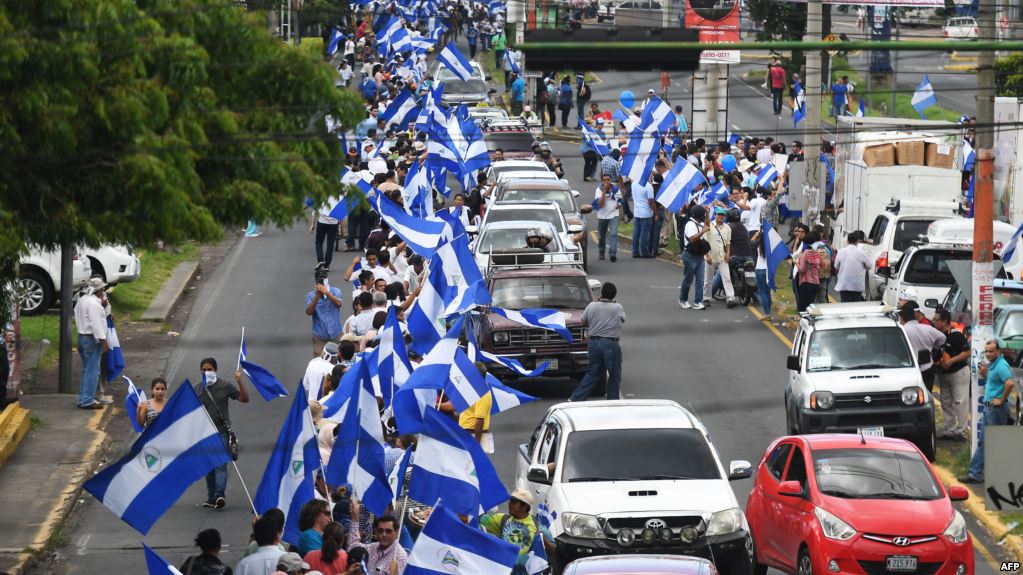Well Paved Roads And A “Killer Wanted”
The streets and alleyways off the well-paddled path are quiet with a slight aura of violence.
Last month, the US Department of State released a travel advisory to all Americans that read:
Reconsider travel to Nicaragua due to crime, civil unrest, and limited healthcare availability.
On July 6, 2018, the U.S. government ordered the departure of non-emergency U.S. government personnel. The U.S. Embassy remains open to provide emergency services for U.S. citizens.
Heavily armed, government-controlled parapolice forces in civilian clothing, sometimes numbering in the hundreds, operate in large parts of the country, including Managua. They are often in vehicles that don’t have license plates, and they may be escorted by uniformed police forces. These groups are attacking blockades, kidnapping and detaining individuals, taking over privately owned land, and committing other crimes.
Rallies and demonstrations are widespread and occur daily with little notice. Government-controlled forces have attacked peaceful demonstrators leading to significant numbers of deaths and injuries. Looting, vandalism, and acts of arson often occur during unrest, including in tourist areas. Government authorities detain protesters, and some people have disappeared. Human rights groups have documented credible claims of torture of detainees.
Hospitals around the country are inundated with victims of violence and lack the capacity to respond to other emergencies. Other hospitals have denied treatment to people wounded in protests.
Violent crime, such as sexual assault and armed robbery, is common and has increased as security forces focus on the civil unrest. Police presence and emergency response are extremely limited.

The architecture of a beautiful country. Photo by Reverend Honey Suckle
Right now, we’re headed into Leon, after an early morning boat session at La Barra, a semi-punchy, sorta backed-off due to an overly high tide, peak located far offshore the Sandino rivermouth.
The roads in Nicaragua are of an amazingly high quality, far superior to those of the island kingdom I call home.
They’re a result of the infrastructure initiative instituted by Ortega after he won the 2006 presidential election. What were once nearly impassable rutted dirt tracks are now smooth, multi-lane highways connecting a country once isolated from itself.
‘[Ortega’s] supporters say he built the roads,” our driver tells me, “But he didn’t pay for them out of his own pocket. The Nicaraguan people did.”
He goes on to tell me of the popular sentiment that Ortega is really no longer in charge. Rumors circulate about Ortega’s failing health. That he travels to Cuba regularly in search of treatment. That his mental faculties are in severe decline. That his wife, Rosario Murillo, who has served as Vice President since his most recent term began in 2017, is the real power behind the presidency.
He tells me that she is evil and the root cause of the recent wave of state sponsored violence.
“70-80%” of Nicaraguans want him out, but Murillo holds onto power in the hopes that she will reign following Ortega’s imminent demise.
“[Ortega] doesn’t want to destroy the country,” he elaborates. “He just wants power. But if he refuses to step down, there will be civil war. And that will destroy the country.”
The line is delivered with a nervous laugh. The prospect of violence is not one that the average Nicaraguan relishes. The country has too often and for too long been the site of vicious internecine conflict. The prospect of that beginning again is widely feared.
Founded in 1524, Leon is a beautiful city. Ornate churches loom over the surrounding businesses and dwellings. The architecture of the average building is suited for siege warfare. Brick walls butt up against sidewalks, heavy wooden doors are locked and gated. Inside they open up into central courtyards with rooms arrayed around.
Leon is a college town populated by a disproportionate number of youth. It was a hot spot during recent protests. Government buildings, and some businesses, burned. The paving stones that comprise the roads were pulled up and piled into barricades.
Police fired upon protesters when the government moved to remove the blockades, resulting in numerous deaths.

Nicaraguan civilians form a human chain in protests that led to three deaths last month. Photo by Voa News
A mere month later there is almost no indication of the events beyond ongoing repairs to roads and smatterings of anti-Ortega graffiti.
A stencil of Ortega’s face above the words, “Se busca asesino,” translating to “killer wanted” is the most prevalent.
But a Sunday afternoon spent walking the streets shows the typical tranquility of a Nicaraguan day of rest. Church services are ongoing and, as they conclude, many head to the Plaza Ascunsion.

Killer wanted. Photo by Reverend Honey Suckle
Surrounding a fountain adorned with lions the plaza fills with children, families, young lovers walking hand in hand. A small cafe does brisk business; as the sole group of Americans present we’re greeted by smiles and nods.
Vendors sells childrens’ toys, cotton candy, and cold beverages. A group has set up a series of trampolines. They are filled with bouncing, laughing, children. Teenage girls roll by on skates and a group of young men attack a waxed ledge on skateboards.
It is calm, idyllic, lacking even a hint of violence. The men wear long pants and collared shirts. The women are dressed conservatively but share a common beauty.
We drink ice cold Tonas, priced at less than a dollar apiece, and take a stroll through surrounding neighborhoods. We stop in one of the many farmacias and I demonstrate to my companions the wonders of low cost pharmaceuticals.
It is a beautiful day in a beautiful country populated by beautiful people. One hopes dearly that never changes.





Comments
Comments are a Stab Premium feature. Gotta join to talk shop.
Already a member? Sign In
Want to join? Sign Up